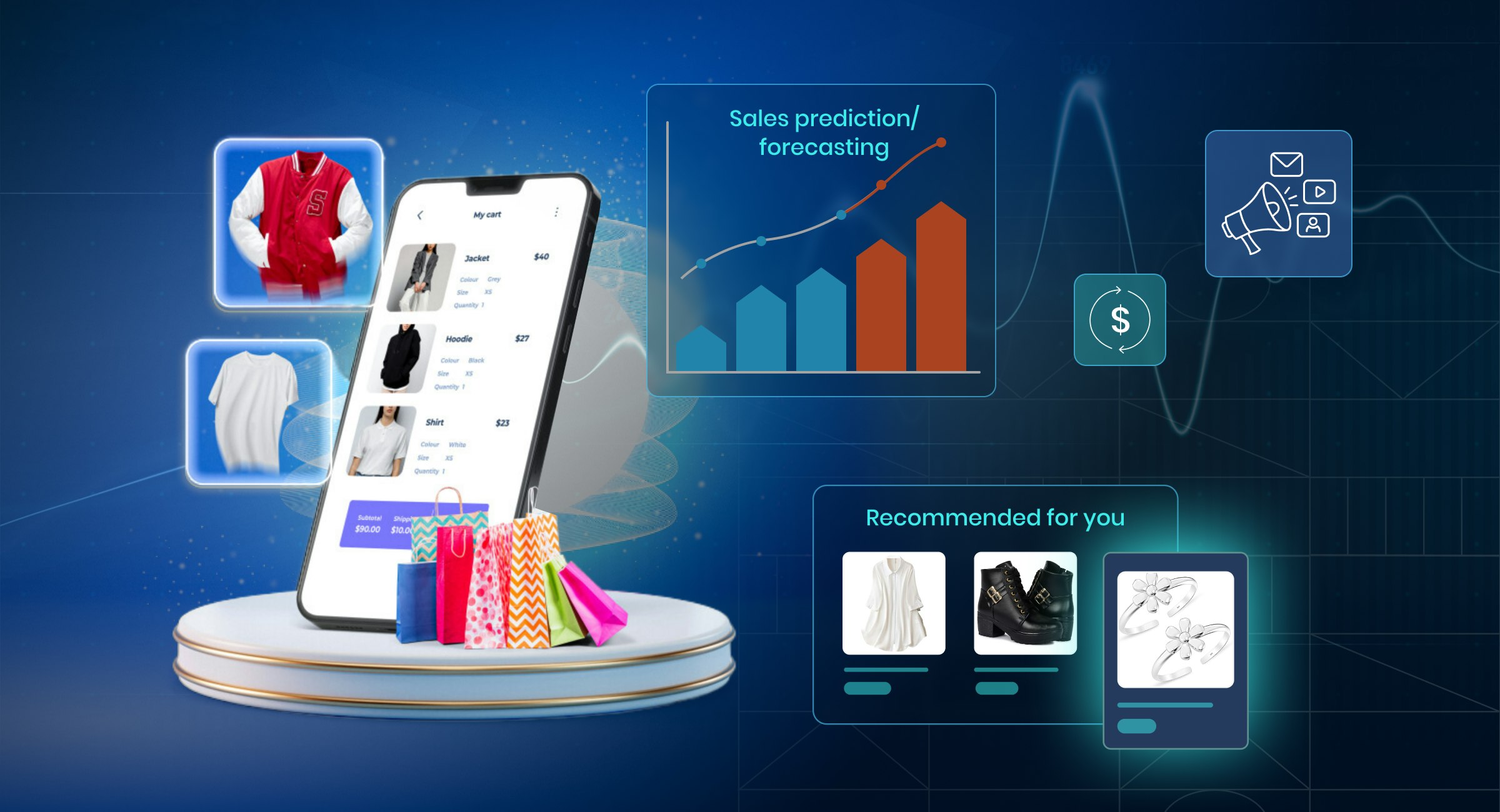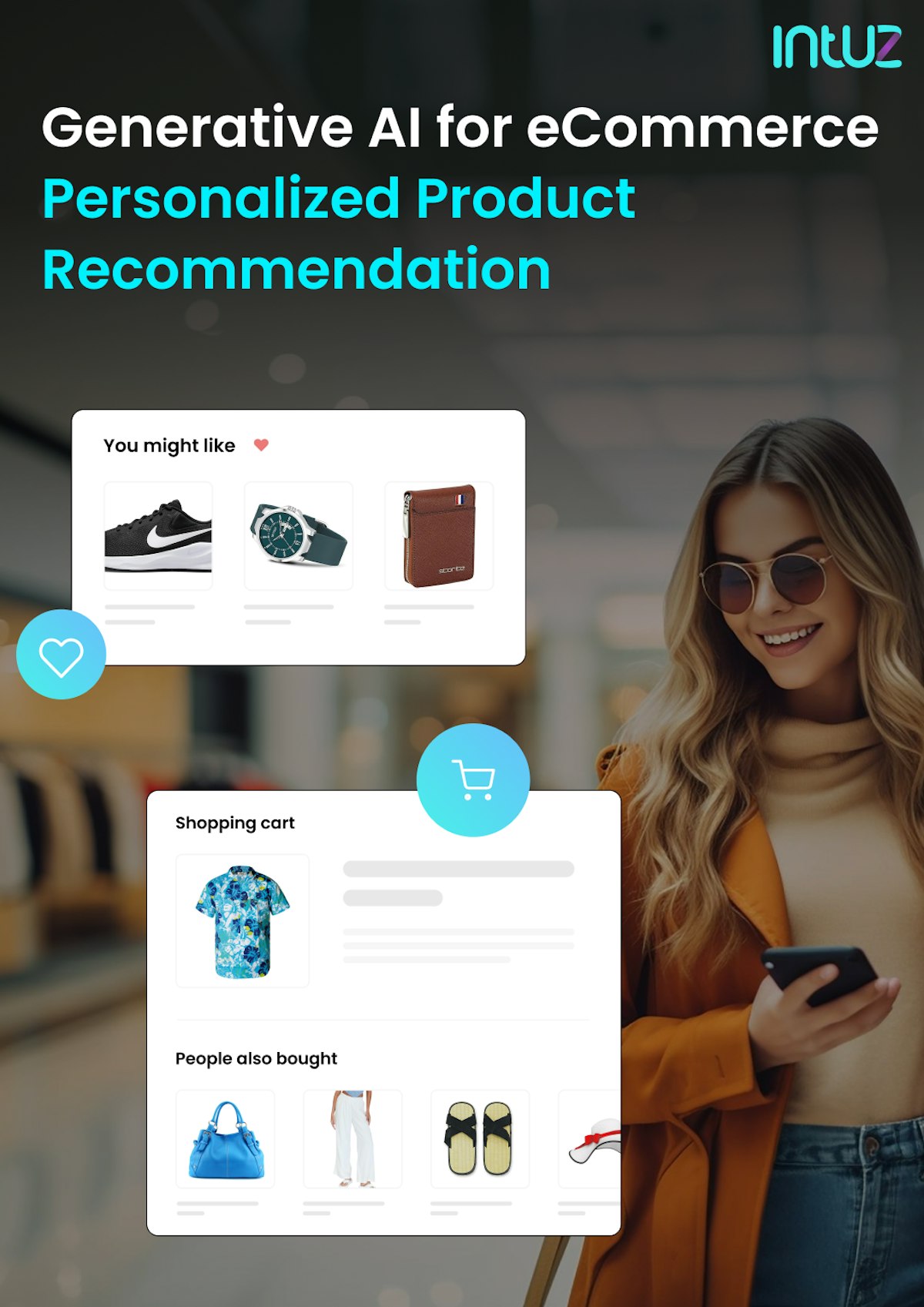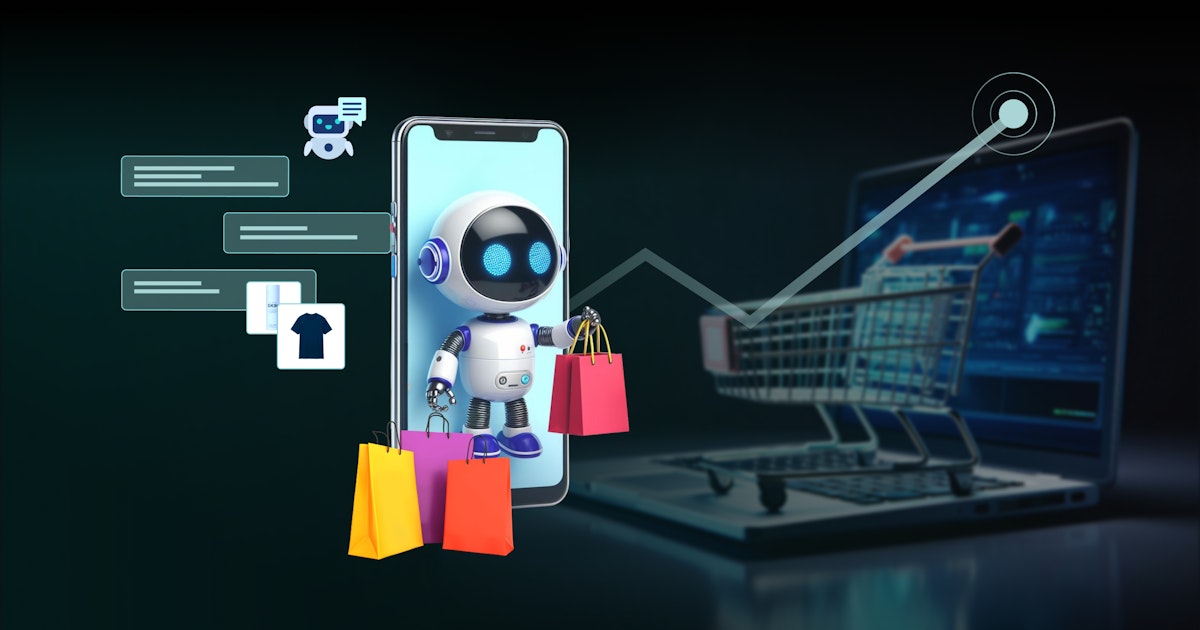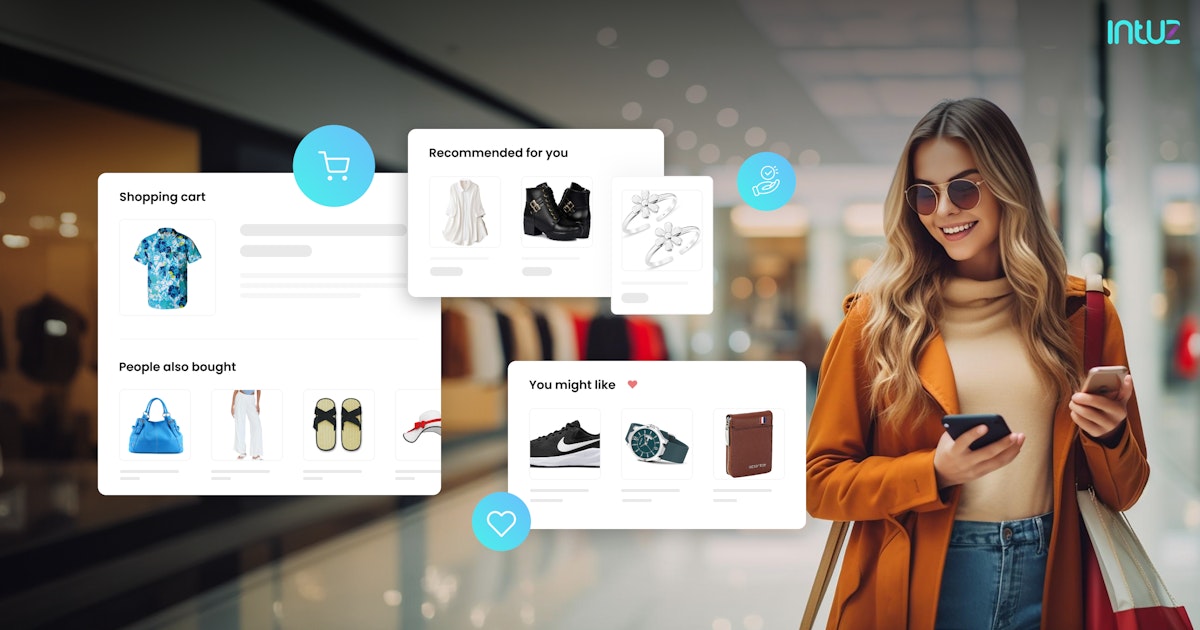Table of Content
Over 2.14 billion people from around the world shop online. This is around 27% of the global population. In India, specifically, the number of online shoppers is expected to reach 501.6 million by 2029, with a 34% increase in user penetration.
With such humongous volumes come challenges in diverse aspects of running an eCommerce store, such as dynamic pricing, overstocking, and understocking, formulating the right marketing strategies, optimizing supply chain and order fulfillment, vendor management, customer service, and more.
However, all such concerns can be tackled with the help of predictive analytics. Through the analysis of historical data, eCommerce businesses can now run analytics models to predict upsurges in demand, anticipate trends, and stay a step ahead of market dynamics to improve sales, minimize losses, and optimize supply chain and order fulfillment.
In this article, we will explore what it is and how businesses can leverage its power to propel their eCommerce business to new heights, defy the concept of seasonal demands, and be perpetually active.
Key Takeaways
The number of online shoppers is expected to reach 501.6 million by 2029.
eCommerce owners face diverse challenges such as stockout, overstock, optimizing supply chain, personalized product recommendation and targeted marketing campaign, increasing customer churn and more.
AI predictive analytics solved all the above challenges by offering capabilities to predict customer demand based on customers, stores, and outside market historical and real-time data.
Sentiment analysis of eCommerce platforms and proactive ORM can be implemented with predictive analytics.
What is AI-powered predictive analytics for eCommerce?
Predictive analytics comes into the picture as a subset or use case of AI, where historical data of users is analyzed to predict future behaviors. Custom and proprietary machine learning algorithms and models process abundant volumes of data and help analysts visualize data on actions users are most likely to take and build their website and its functionalities accordingly.
Beyond just estimations and forecasting, today's algorithms are super-efficient in delivering accurate results in predicting human actions on eCommerce websites.
eCommerce businesses are home to treasure chests of valuable user data and insights such as:
- User demographics
- Purchasing pattern
- Tastes and preferences
- Past orders
- Preferred payment methods
- Top categories
- Wishlists and more
Conventionally, such crucial insights went unnoticed, but thanks to the data revolution, this can be put to the best use to make better and more informed business decisions and offer superior customer service.
With the deployment of predictive analytics, eCommerce businesses can –
- Boost sales by predicting customer demand and targeted marketing campaign
- Offer the most relevant and ideal products to their customers - personalized recommendations
- Price products dynamically
- Optimize delivery time
- Improve loyalty and engagement programs and more
Let’s explore in detail how the potential of predictive analytics can be harnessed to improve eCommerce businesses.
5 ways AI-powered predictive analytics boost eCommerce sales
AI predictive analytics boosts eCommerce profits by offering personalized recommendations, forecasting demand, executing targeted marketing campaigns, predicting customer churn, and enabling dynamic pricing.
1. Drive more conversion with personalized product recommendations
From personalization, we are gradually moving towards hyper-personalization. This involves a meticulous understanding of customer needs and behaviors to offer them exactly what they are looking for at the time they are looking for and at the location they are looking for.
Predictive analytics helps your eCommerce platform achieve this seamlessly. Recommendation engines lie at the heart of eCommerce websites, and with predictive analytics, they can be optimized to deliver better results.
For Instance, predictive analytics can be used to accurately predict the next purchase cycle if the algorithm detects a pattern where a user replenishes baby diapers every week. Businesses can then proactively recommend the product through nudges, push notifications, or exclusive deals on bulk purchases.
Another aspect of personalization is recommending similar products to users, where phone cases are recommended or bundled with the smartphone purchase.
Predictive analytics can also be used to study customer tastes, preferences, and inclinations to recommend products they would love to buy.
For example, If data analysis reveals a user’s increased sense of involvement in sustainability measures, products like bamboo toothbrushes, vegan choices, or eco-friendly alternatives can be proactively recommended to further enhance the buying experience.
This is a game-changer as reports also reveal that over 76% of users would prefer buying from businesses that personalize products and experiences.
2. Optimize inventory with demand forecasting
An interesting statistic shares that holiday sales account for over 20% of overall retail sales. This could be during an upcoming festival season or an occasion like Black Friday or Cyber Monday.
Apart from fixed timelines, there are also several ad-hoc instances, such as social media trends, volatile weather conditions, or the onset of a pandemic, that point to a probable uptick in demand for products.
During times like these, eCommerce businesses can make use of predictive analytics to anticipate in-demand products in advance and optimize their inventory accordingly. Data-driven decisions can inform decisions based on gut instincts.
Some of the data touchpoints to accomplish this include:
- Historical sales data comprising past sales records and seasonal trends
- Customer data involving purchase history and customer segmentation data based on demographics, preferences, and behavior
- Inventory data such as stock levels and reorder rates
- Customer interaction and engagement data such as from heat maps on websites, user reviews and feedback, and website analytics
- External data featuring weather patterns, social media trends, and economic indicators
- Geographic data to estimate demand based on location-based sales, upcoming local events, and more
For Instance, when there’s an upcoming sporting season, eCommerce aggregators can conveniently use predictive analytics to estimate demands for team-specific jerseys or even snacking items customers would love to indulge in during a good game.
Such demand forecasting works wonders for businesses, as they can:
- Reduce stockouts by precisely estimating demands
- Lower inventory maintenance costs
- Improve shipping and delivery time
- Eliminate chances of stocking items that wouldn’t sell and more
3. Execute a targeted marketing campaign leveraging demand forecasting
Personalized marketing campaigns using AI data that are contextual, relevant, and tied to specific challenges always strike a chord with users. The lack of user data or insights on user personas has always limited agencies' marketing approaches.
With predictive analytics, this changes completely. From a simple personalization technique in email marketing to targeted campaigning, this technology allows marketing professionals to:
- Enhance personalization in aspects of demographics, addressing user concerns, and storytelling
- Precision targeting for the exact date and time of campaign launches to increase tractions
- Improved segmentation to move away from a generic marketing approach to more bespoke campaigns such as limited-time deals for repeat customers
- Reduce diverse expenses associated with digital marketing and more
For Instance, let’s consider cart abandonment data. When analytics suggests that a smartphone has been lying dormant in the cart for a long time, your targeted campaign can involve special discounts to pull the customer into purchasing it. This could be in the form of cashback based on data from their preferred payment choices, loyalty points redemption, payday-specific campaigns, and more.
4. Optimize profit with AI dynamic pricing
Visualize this. Your eCommerce website visitor is at the product consideration stage of a buyer’s journey. They have reached your platform after exploring multiple other competitors or will proceed to one of them from your page.
Now, what if they find pricing that is less than what your business offers?
Again, now what if, when comparing prices, your website dynamically adjusts pricing in real-time? This technique to fluctuate prices to keep up with demand (and stay ahead of one) can be achieved through campaigns and predictive analytics.
Some of the ways you can adjust pricing is by analyzing data from touchpoints such as:
- Historical sales data to analyze and modify past sales data of similar smartphone models
- Competitor pricing to monitor their pricing range and attempts to match them or beat them
- Customer behavior to understand preferences in smartphone models explored and added to the cart without completing a purchase
- Demand-based adjustments to upsurge prices depending on an upcoming holiday or festive season
- Geographic data to set higher prices in regions with less competition for a particular product
- Inventory levels to reduce prices for products with lesser shelf life and more
With such implementations, you can conveniently experience business benefits, including:
- Competitive advantage and market dominance
- Improved customer satisfaction
- Decreased cart abandonment rates
- Maximized revenue
- Improved inventory management and more
5. Increased customer retention through advanced churn prediction
Churn rates are nightmares for eCommerce business owners. When they report drops in purchases from their stores, the factors they usually point out generally stem from a vague understanding of market conditions and gut feelings. However, with business analytics and predictive analytics, this can be narrowed down to concerns such as:
- Issues with the quality of your products
- Inappropriate pricing
- Poor website experience or shopping experience
- Surge in prices during checkout
- Poor packaging and delivery methodologies
- Involuntary churns that arise due to expired credit cards and more
Predictive analytics can be an incredible companion in tackling and mitigating customer churns. A good example of how you can approach tackling and mitigating churn is by compiling data such as:
- Customer interaction data that gives you ideas on how users interact and engage on your website, application, social media handles, and customer service requests
- Transaction data to understand purchase history, last order, frequency of purchases, order return rates
- Engagement data such as email open rates, click rates, ad clicks, and other communications
- Behavioral data to comprehend the average time spent on your website/app, usage patterns, preferred categories, and more
With such data, you can understand and place users in quadrants such as:
- Highly active users
- Moderately active users
- At-risk active users
- Inactive users
With this visualization, you can now run targeted campaigns for distinct quadrants that could involve prompts to strategies that can rekindle interest in using your platform to buy products. For instance, a user who opens all your discount emails but doesn’t reach your website or app from the source could mean there are competitors matching prices or offering better order fulfillment experiences. Such users can be classified as at-risk and any targeted campaign from the competitor would mean a poached customer.
In conclusion
Predictive Analytics is an incredible value addition for your eCommerce business. If you have been generating and storing abundant data from your platform, now is the ideal time to develop and deploy a proprietary model and implement predictive analytics.
Let profitability and market dominance be the goal this year and may you meticulously craft your way towards them with this technology.
To understand how to leverage AI-powered predictive analytics in your eCommerce business, please book a 45-minute call with Intuz’s AI experts today. Also, receive a free roadmap to get started with technology adoption.






